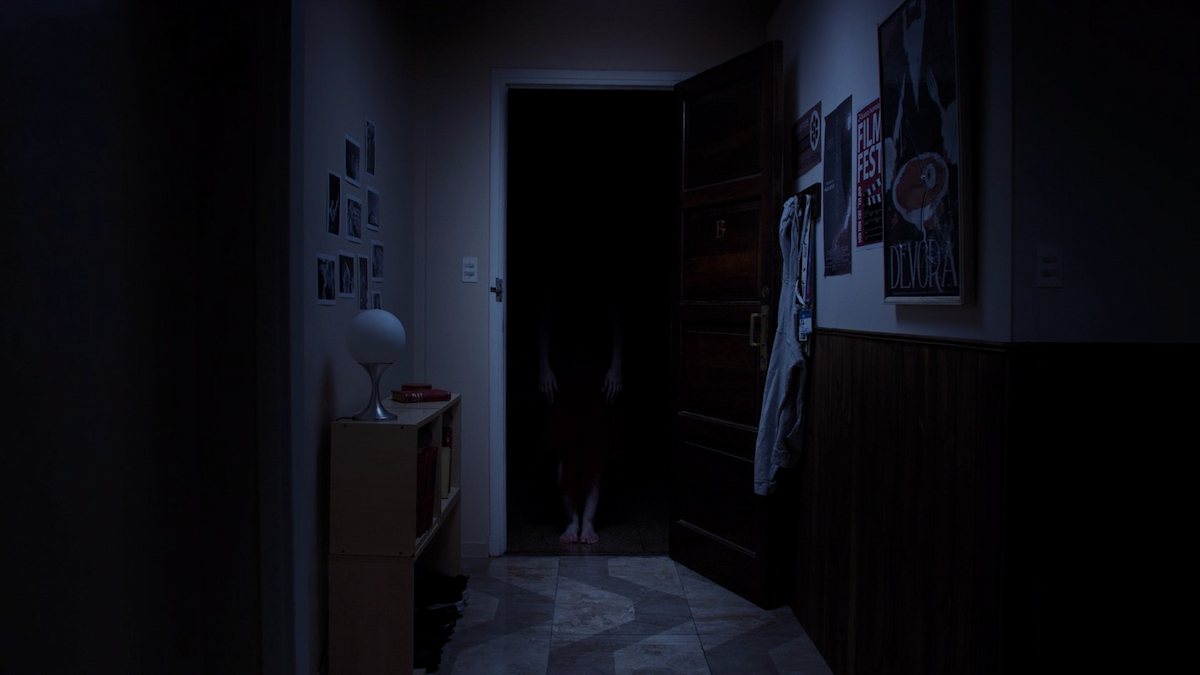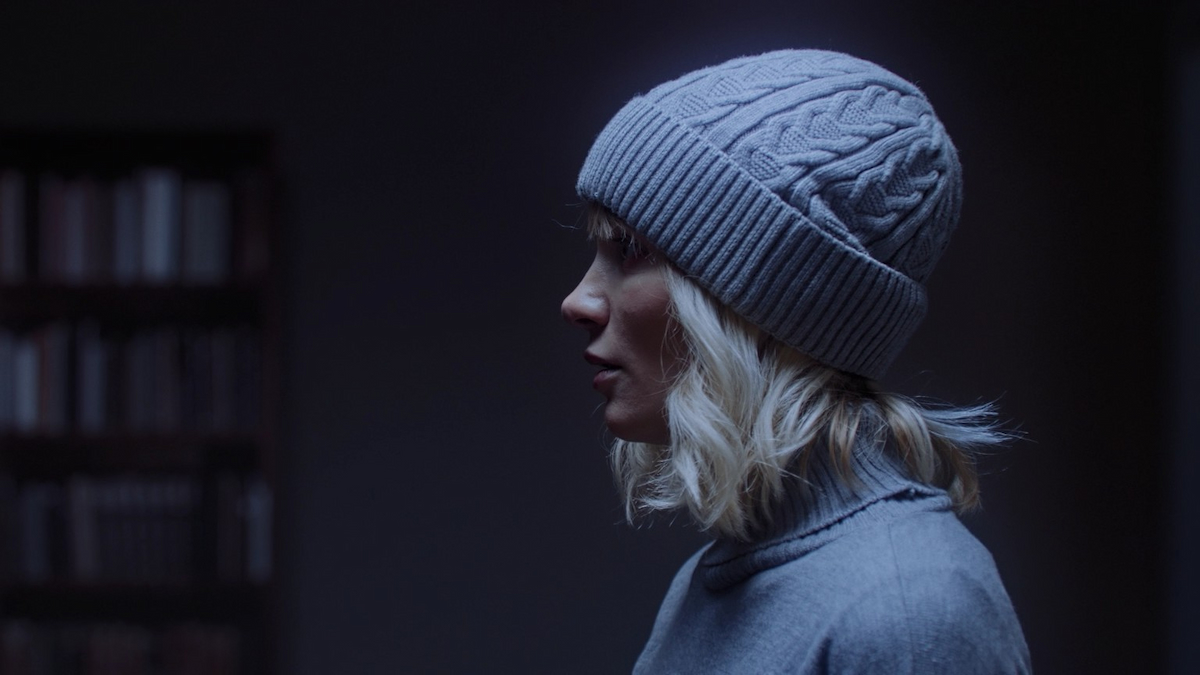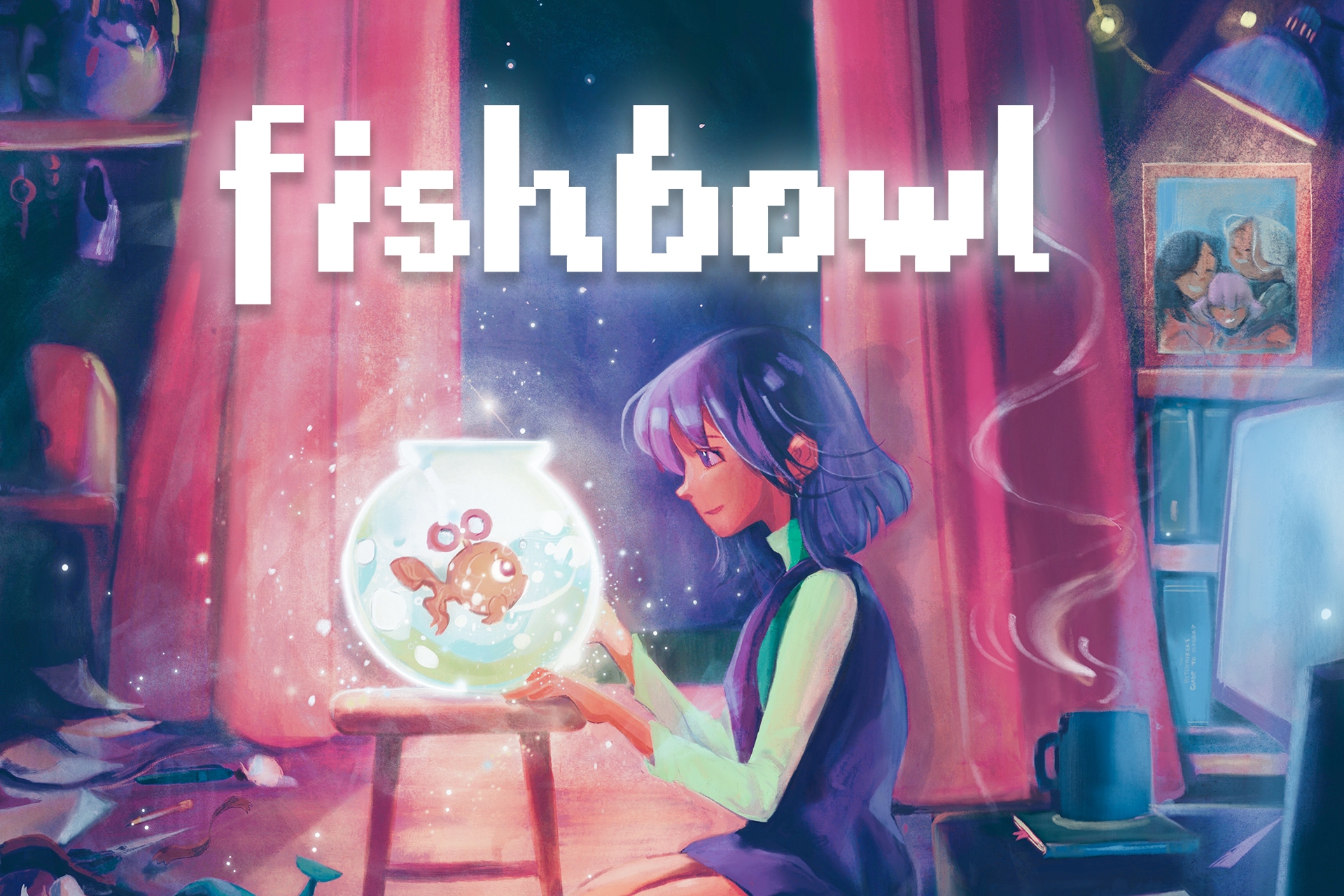Warning: The following article on how the game fuses 8-bit and live-action horror contains minor spoilers for the Tenebris Somnia demo.
As someone whose taste in video games runs the gamut from AAA titles to obscure indies, I firmly believe that a great horror game can transcend the relative quality of its graphics. To take this a step further, some horror experiences are actually better suited to ultra-simplistic, 2D graphics — even to the point where they’d likely be less scary if reimagined using photorealistic or highly detailed stylized visuals. As one example, Airdorf’s FAITH: The Unholy Trinity — a game that hearkens back to the “Satanic Scare” of the 1980s and manages to weaponize nostalgia via its Atari-esque aesthetics — would not have nearly the same impact without its “wickedly chunky pixels” and rotoscope animations.
Something I hadn’t considered until recently is what might happen if a single horror game utilized two drastically different visual styles: one for the core gameplay and another for cinematics. Would the transitions feel disjointed and immersion-breaking, or would the effect be complementary, offering the best (or most terrifying, rather) of both worlds?
What prompted me to ponder this question was the demo of Tenebris Somnia, an upcoming survival horror game developed by Andrés Borghi and Tobías Rusjan and published by Saibot Studios. The developers describe Tenebris Somnia as “in the same vein as survival horror classics like Silent Hill or Resident Evil, but transferred to a retro 2D environment more typical of the N.E.S. or Famicom.” The game also features a “secret ingredient”: professionally shot, live-action cutscenes to accompany key plot points.
Related: Getting to the Roots of Folk Horror with Visionary Horror Game Developers

In the demo, you play as Julia, a woman plagued by recurring nightmares in which her ex-boyfriend, Ivan, is killed by monsters. Julia’s attempts to contact Ivan have been in vain, so she decides to pay a visit to the apartment they once shared, letting herself in with her old key when Ivan doesn’t come to the door. To say the place is a mess is a bit of an understatement, with a more accurate description falling somewhere between “location of a severe mental breakdown” and “occult crime scene.” The windows are boarded up, the bathroom mirror is cracked and caked with blood, and the door to the study bears a strange sigil and is sealed shut with a red, waxy substance. Instead of leaving and calling the authorities like a reasonable person — this is a horror game, after all — Julia decides to investigate, hoping to discern what happened to Ivan.
Gameplay consists primarily of straightforward, inventory-based puzzles — you collect various items, combine them, and use them on the environment to advance — but there’s also some light combat of the “right mouse button to aim; left mouse button to swing weapon” variety. Our first taste of Tenebris Somnia’s cinematics occurs just before this combat phase, serving as an introduction to the monster Julia is about to contend with.
Related: The Exorcist is About the Horrors of Modernity

The shift from a colorful pixel art setting to a dimly lit cutscene is surprisingly smooth, with the latter giving the impression of a “zoomed in” look at the former. While the monster was significantly more frightening in the moments it remained partially obscured by darkness (then again, most things are), I found the closeup shots of Julia’s expression to be quite effective — not only did they hammer home the sense of dread the scene was meant to convey, they also gave a real face to the pixelated sprite that was the sole representation of Julia’s character until this moment. Now that’d I’d seen the fear in her eyes, I could actually start to empathize with her.
Though it’s too soon to say if a full game presented in this manner will be successful, I’m certainly looking forward to finding out. At the very least, Tenebris Somnia promises to be a unique, memorable horror experience.
The demo of Tenebris Somnia is currently available for download on Steam.






Published: Oct 14, 2023 12:00 pm